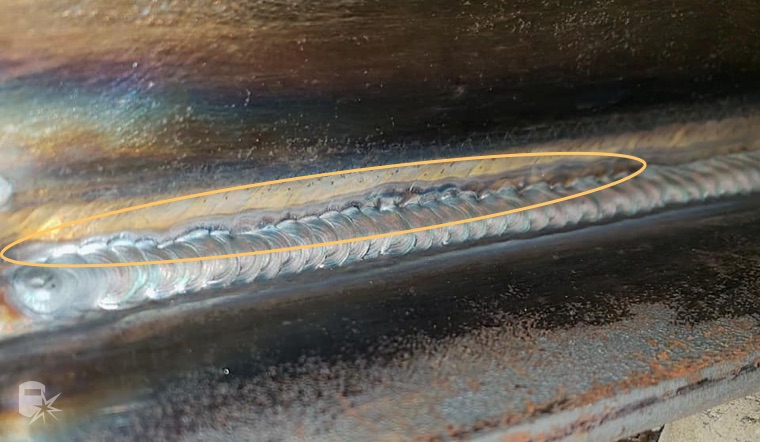Preventing Weld Undercut Demystified: Strategies for Success
Wiki Article
A Comprehensive Guide to Identifying, Stopping, and Fixing Undercut Welding Problems in Your Welding Tasks
In the world of welding, coming across undercut problems is an usual obstacle that can compromise the structural honesty and overall top quality of your welding jobs. Comprehending the origin behind undercut welding, being able to properly find it in your welds, and executing efficient preventative measures are essential abilities for any welder. Furthermore, having the expertise and strategies to rectify undercut troubles when they do occur can make a significant distinction in the last end result of your welding endeavors. Stay tuned as we discover the crucial parts of recognizing, protecting against, and fixing undercut welding issues, supplying you with valuable insights and methods to raise your welding skills to the following degree.Typical Root Causes Of Undercut Welding
Undercut welding, a common problem in welding procedures, can be triggered by numerous factors that require to be carefully identified and addressed to ensure the integrity of the weld joint. One of the main reasons of undercut welding is excessive warm input.Another common reason for undercut welding is inappropriate welding strategy. Inadequate control of the soldering iron or gun, wrong angle or distance in between the torch and the work surface, or inconsistent traveling speed can all add to the development of undercut. Additionally, using the wrong welding consumables or electrode dimension for a specific joint arrangement can result in undercut issues. Recognizing these root triggers and applying corrective steps is vital in avoiding and fixing undercut welding issues in welding tasks.
Identifying Undercut in Welds

To determine undercut accurately, appropriate lighting and zoom tools are vital to inspect the weld joint completely. Making use of devices such as a welding gauge or a magnifying glass can aid in discovering also the tiniest undercut blemishes. In addition, running a finger or a finger nail along the weld joint can often expose undercut, as the surface may really feel irregular or have a dip where the undercut exists.
Precautionary Steps for Undercut
Having a deep understanding of the causes of undercut in welds enables for the execution of reliable preventive measures to maintain weld high quality and integrity. These settings should be enhanced to protect against excessive warm input, which can lead to damage development.Methods for Taking Care Of Undercut

To attend to undercut problems properly, welders can employ specific methods focused on fixing the problem and bring back the integrity of the weld joint. One technique is to readjust the welding criteria, such as the voltage, present, and travel rate, to guarantee correct warm input and blend. Raising the welding present or minimizing the traveling her response rate can help complete the undercut. Additionally, altering the welding method from a push to a drag or the other way around can likewise assist minimize undercut.
Another strategy is to utilize a weaving motion while welding to make certain correct sidewall combination and fill in the undercut. By oscillating the welding arc back and forth within the weld joint, the welder can deposit more filler material into the undercut areas, properly getting rid of the problem.
In addition, grinding out the undercut and rewelding the joint can be a practical service for a lot more serious undercut issues - Preventing weld undercut. This procedure includes eliminating the undercut area, preparing the base steel, and afterwards rewelding the joint with correct welding parameters and methods to stop undercut from reoccurring

Professional Tips for Preventing Undercut
Using appropriate welding methods and maintaining control over crucial welding parameters are essential techniques for welders aiming to stop undercut in their weld joints. One professional tip for preventing undercut is to make sure appropriate joint preparation. This involves cleaning up the base steel extensively to remove any pollutants that might bring about undercut development. Furthermore, selecting the suitable welding process and filler steel for the details application can help prevent undercut. Welders need to likewise pay very close attention to the welding present and voltage setups, guaranteeing they are within the advised range to stay clear of getting too hot and potential undercut. Preserving a constant travel rate throughout the welding process is one more important suggestion to avoid undercut. By moving at a stable rate, welders can make certain correct blend and decrease the possibility of undercut development. Examining important source the weld grain after completion can assist recognize any kind of signs of undercut very early on, permitting for prompt restorative activity to be taken.Conclusion
To conclude, determining, preventing, and dealing with undercut welding issues in your welding jobs is vital for making sure solid and resilient welds. Preventing weld undercut. By understanding the typical causes of undercut, having the ability to determine it in welds, applying safety nets, and using correct techniques for repairing undercut, you can stay clear of potential problems and create top notch welds. Complying with professional pointers for avoiding undercut can aid you enhance your welding skills and produce better outcomes in your projectsUndercut welding, a typical issue in welding procedures, can be caused by various elements that need to be carefully recognized and resolved to guarantee the integrity of the weld joint. In addition, running a finger or a finger nail along the weld joint can in some cases expose undercut, as the surface area may feel unequal or have a dip where the undercut exists.
Using appropriate welding strategies and preserving control over vital welding specifications are important strategies for welders intending to stop undercut in their weld joints.In conclusion, recognizing, stopping, and repairing undercut welding problems in your welding jobs is vital for making sure durable and solid welds. By understanding the common reasons Go Here of undercut, being able to determine it in welds, applying preventive procedures, and utilizing correct techniques for dealing with undercut, you can avoid potential issues and develop high-quality welds.
Report this wiki page